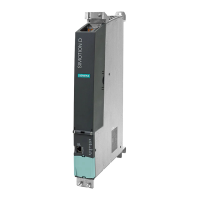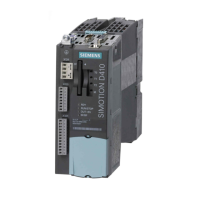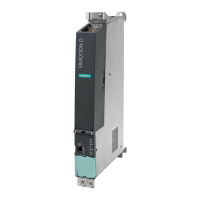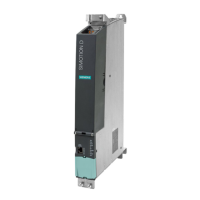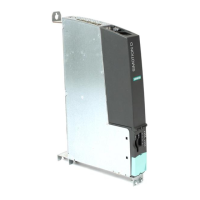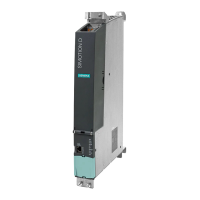Data SIMOTION D4x5-2
Switching frequency of the outputs, max.
● With resistive load 4 kHz
● With inductive load 2 Hz
● With lamp load 11 Hz
Short-circuit protection yes
1)
Specification for Vcc = 24 V, load 48 Ohm, H = 90% V
Out
; L = 10% V
Out
2)
The digital inputs are protected against polarity reversal up to -30 V
Max. switching frequency of the DO
The
max. switching frequency of the hardware depends on the load. For an ohmic load of 24 V/
0.5 A, it is up to 4 kHz. (typical value; low-high ratio = 50:50; short cable lengths)
Logic control of the digital output is also a limiting factor.
● If an X142 DO is set or reset via the TO cam/TO cam track, up to 2 edges are possible per
servo or ServoFast cycle
→ with servo cycles of at least 500 µs, a max. switching frequency of 2 kHz is achieved
→ with a ServoFast cycle clock (D435‑2 DP/PN to D455‑2 DP/PN only) of 250 µs, a max.
switching frequency of 4 kHz is achieved
● if an X142 DO is set or reset from the user program, no more than 1 edge is possible per
servo or ServoFast cycle.
→ with servo cycles of at least 500 µs, a max. switching frequency of 1 kHz is achieved
→ with a ServoFast cycle clock (D435‑2 DP/PN to D455‑2 DP/PN only) of 250 µs, a max.
switching frequency of 2 kHz is achieved
● if an X122/X132 DO is set or reset from the user program, no more than 1 edge is possible
per servo cycle.
→ with servo cycles of at least 500 µs, a max. switching frequency of 1 kHz is achieved
The max. achievable switching frequency can also be limited by the CU parameter p0799[0]
(sampling time of the inputs/outputs of the CU) or p2048 (PROFIdrive PZD sampling time).
Reproducibility
The reproducibility at the measuring input input depends on the edge steepness of the
measurement signal. Generally, the following is valid: The steeper the edges of the input signal
are, the easier it is to reproduce the measurement results. Sloping signals are achieved by
switching the signal level to "active". This is typically with rising edges as the signal here is
"actively" switched to HIGH by the digital output (example: output of a TM17 module: Rising
edge).
Falling edges typically have less edge steepness (signal level that falls slowly), as the signal
level is "not actively" forced to LOW here (example: output of a TM17 module: Falling edge).
Recommendation:
Where the connected components do not have special output drivers, the recommendation is
to use the rising edges for measurements.
Technical data of the D4x5-2
5.5 Interfaces and performance features
SIMOTION D4x5-2
86 Manual, 04/2014

